As a MAMIL, I’ve made the requisite pilgramages to both Mallorca and Girona (many times), but I’ve also realized that I need to broaden some horizons. Spain is my happy place, and through I’ve ridden in France, Italy, Belgium, and the UK, I keep finding myself looking at flights to Madrid and Barcelona.
During a visit to Girona, Chris at Eat Sleep Cycle told me that he thought Malaga was the next road cycling destination. Pros like Jonas Vingegaard train there, and he’s had moderate successes over the last few years. Perhaps there’s something to the place, but at the time of the discussion I put in the back of my head. After all, I was in Girona, and was having a blast as MAMILs are known to do there.
Fast forward a year or two, and I sat staring out the window at what should have been a winter wonderland, but was instead brown hillsides and a short snowpack provided by El Nino. The little bastard had definitely flipped the snowpack from our previous record-setting La Nina year, and although the fatbiking was great, the skiing sucked. The only upside was spending less time on my snowplow. I decided that if we weren’t going to have a proper winter, it was time to search out somewhere warm.
The annual Winter X-Games weekend was approaching, and after decades as a ski race coach/official/courseworker, I basically want nothing to do with that event. It’s not that I don’t respect the athletes or the sport, it’s just that my time standing on the hill, leaning on a shovel watching people compete is over, and with the added load on the highway, restaurants, and bars I feel this is one of my favorite times of the year to be Not Here.
Malaga resurfaced from the depths of my brain, and being on the southern coast of Spain, it offered better weather than we were having at home, so off to Teh Interwbz I went. I did a bit of digging, and there are several websites that list road rides in Malaga complete with downloadable .gpx files. A quick bit of searching for lodging was fruitful, and I found a 1-bedroom apartment with laundry in the SOHO district of Malaga for less than 60 Euros a night. Flights were readily available, and I made a quick booking for Mrs MAMIL and me.
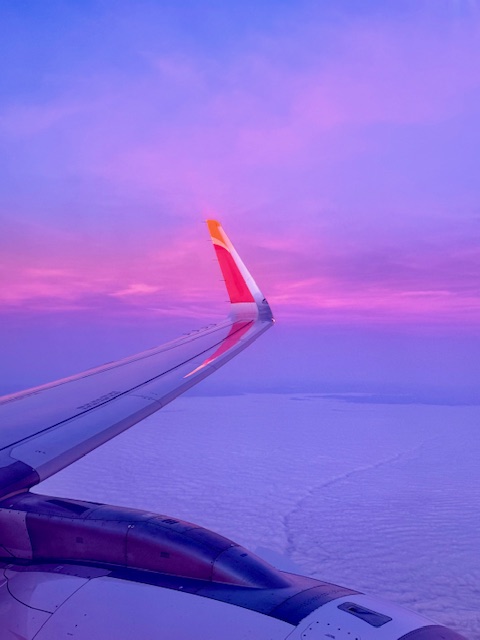 We flew from Denver to London, then connected to Madrid. A major storm had turned the Eastern Seaboard into a ginormous clusterfuck from Miami to Bar Harbor, so my plan was to get to Yerp without going through Newark. EWR is about the worst airport on the planet, and finding any way to avoid it is highly recommended. The threat of puffy clouds causes massive delays there, and any significant storms will leave you stranded for days on end. Despite a 6-hour layover in LHR, the travel to Madrid was fairly easy and uneventful. Navigating the terminals at Heathrow can be a bit of a challenge, as there are several, and all have signage that assumes you’ve lived there your whole life and know your way around. Their website did not actually list what airlines depart from each terminal, so we used the hunt-and-peck method to find our connecting airline. We arrived in Madrid too late to catch the train to Malaga, so we grabbed a hotel, a delicious dinner, and made the trip the next morning.
We flew from Denver to London, then connected to Madrid. A major storm had turned the Eastern Seaboard into a ginormous clusterfuck from Miami to Bar Harbor, so my plan was to get to Yerp without going through Newark. EWR is about the worst airport on the planet, and finding any way to avoid it is highly recommended. The threat of puffy clouds causes massive delays there, and any significant storms will leave you stranded for days on end. Despite a 6-hour layover in LHR, the travel to Madrid was fairly easy and uneventful. Navigating the terminals at Heathrow can be a bit of a challenge, as there are several, and all have signage that assumes you’ve lived there your whole life and know your way around. Their website did not actually list what airlines depart from each terminal, so we used the hunt-and-peck method to find our connecting airline. We arrived in Madrid too late to catch the train to Malaga, so we grabbed a hotel, a delicious dinner, and made the trip the next morning.
Malaga is easy to get to, AGP airport is located about 5 miles from the center of the city and is the 3rd busiest airport in Spain. There are lots of flights from the colder parts of Yerp- Frankfurt, Amsterdam, London, Brussels, Paris, Munich, etc., and the train from Madrid is a great alternative. The ride is about 2-1/2 hours and inexpensive. The train station is less than a mile from the center of the city. Airlines such as Transavia, Iberia, TAP, Vueling, and others have regular service, and both TAP and Iberia have direct connections to Miami.
There are about 600,000 people living there, but January is definitely off-season, so it never felt crowded. We were able to find tables at every restaurant, and the streets were wide open. Business is a bit slow this time of year, and while walking down a narrow alley, we were ushered into a restaurant by a woman who was diverting every passerby into her establishement. Once seated, we watched as she continued to block the alley and send people inside. She was truly impressive to watch.

One could see how the place could be a complete madhouse during high season, but during our visit, it was quite mellow and peaceful.
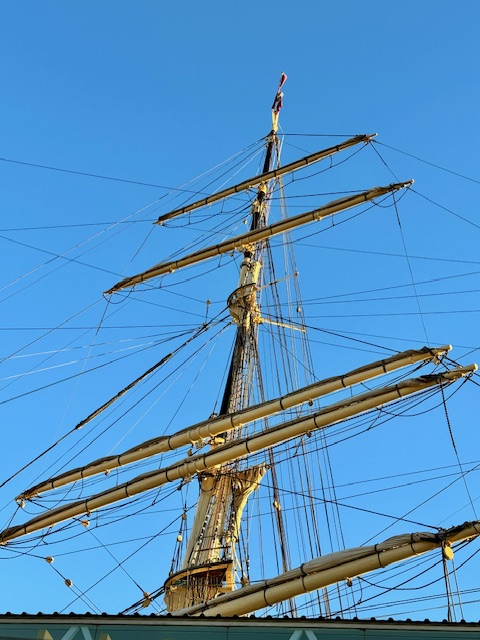
The old city center is walkable and pleasant, paved in marble, and littered with restaurants, shopping, and museums. On the east side is a Roman amphitheatre, Moorish castle, and art museum.
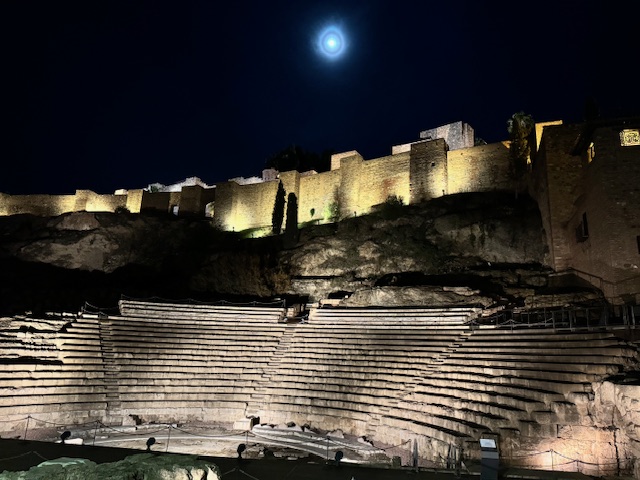
The Picasso Museum is a must-see, and it does justice to his work. I liked it better than the Picasso Museum in Barcelona. We missed out on the Thyssen Museum, but will catch it on a future visit.
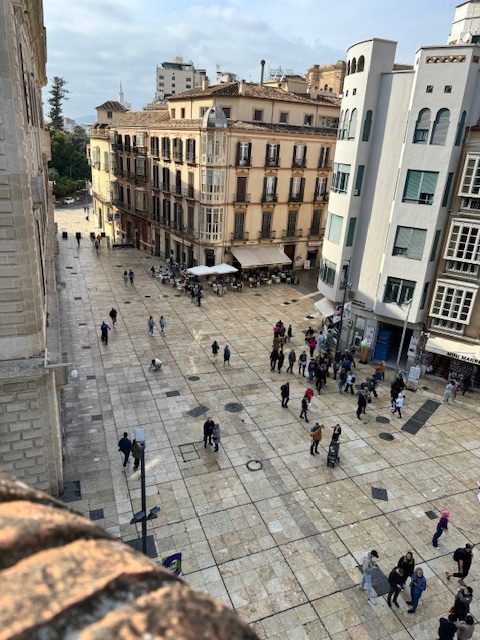
Once settled in our apartment, we assembled our bikes, got a bite to eat, and explored the old city area on foot. I had wanted to ride, but a bit of jet lag and remembering I was on vacation with my wife changed the plan, so we instead had a lovely stroll that was interrupted by occasional food and cocktails.
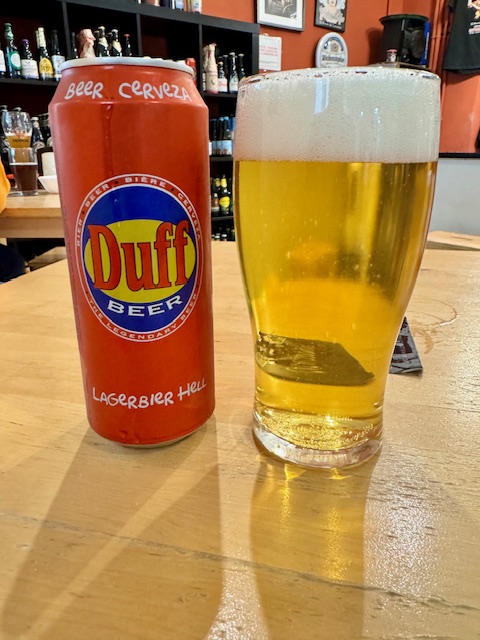
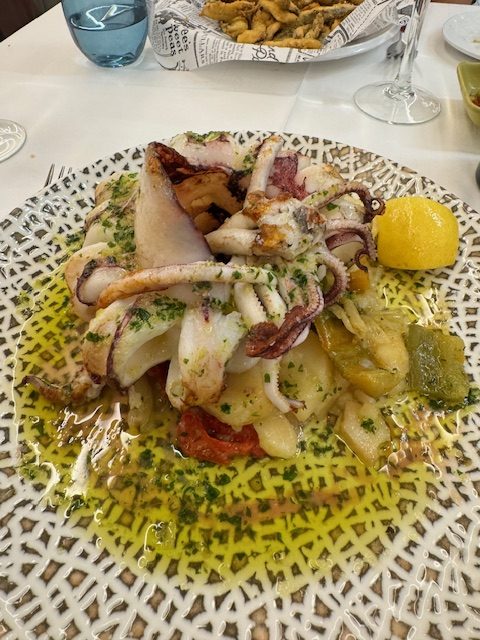
There are many churches throughout the old city, plus a large cathedral that offers tours. Throughout the city, tile murals adorne the outside of several of the churches, with some showing Jesus playing a Chapman Grand Stick.
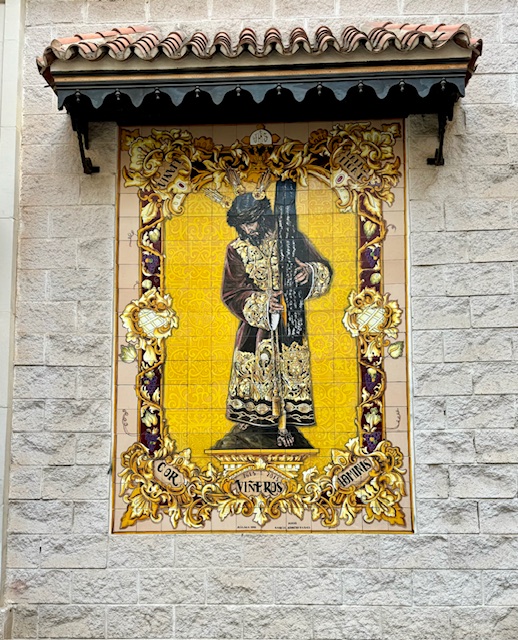
Perched on a hilltop to the east of the old city is the Alcazaba, a Moorish fortress built in 1057. This is well worth a tour (free after 2PM on Sundays).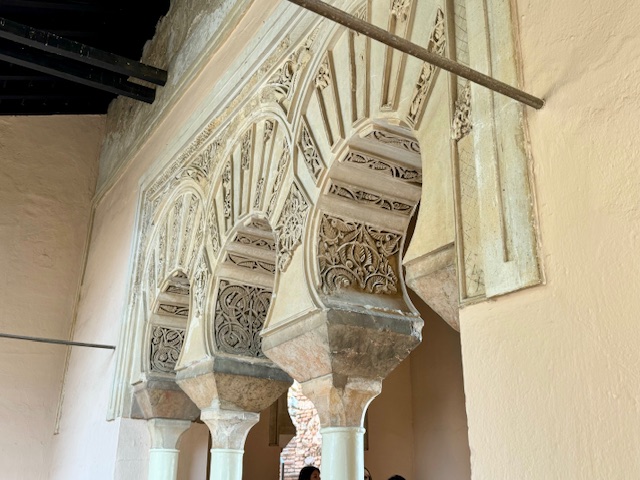 It’s a very interesting self-guided tour and the history is intriguing. Up the hill above it is the Castillo de Gibralfaro, which dates to the late 1200s. Seeing the two together is a great way to spend a few hours, and the views are worth it.
It’s a very interesting self-guided tour and the history is intriguing. Up the hill above it is the Castillo de Gibralfaro, which dates to the late 1200s. Seeing the two together is a great way to spend a few hours, and the views are worth it.
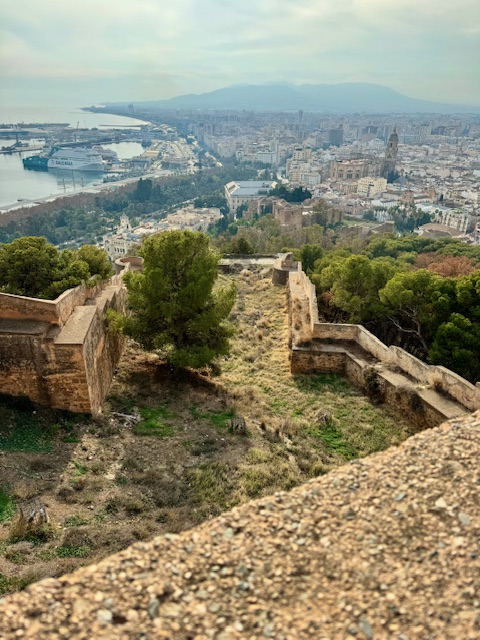
The majority of the road routes I had downloaded were loops that go into the hills above the city, and only 2 were 50km/30 miles. The rest were 80km/50 miles, and I had not planned on trying out any of the longer 100km+ that I had found.
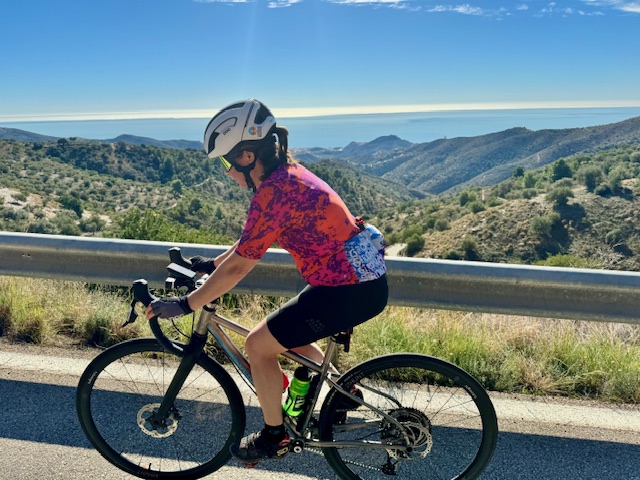
Given that this was a totally new area to us, I booked a guided ride with Bike2Malaga, where I had found many routes listed. They also rent bikes, and the price for a guide was reasonable. Mrs MAMIL and I showed up on time, met the guide, and followed him out of town on a lovely 30 mile loop to the northwest.
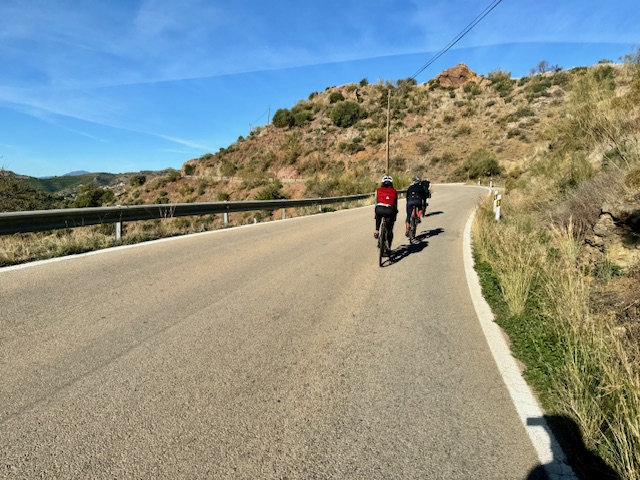
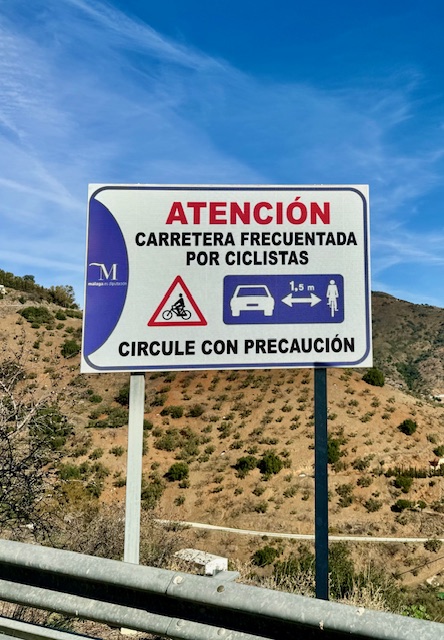
Since Malaga is considerably larger (geographically and in population) to Girona, getting out of town took longer- about 8 miles instead of Girona’s 3-5. Although we were on busy multi-lane city roads, traffic was not aggressive, and the lanes we rode in had sharrows. When we hit the edge of the city, traffic and road sizes both diminished quickly, and we were on clean, dry, empty roads.
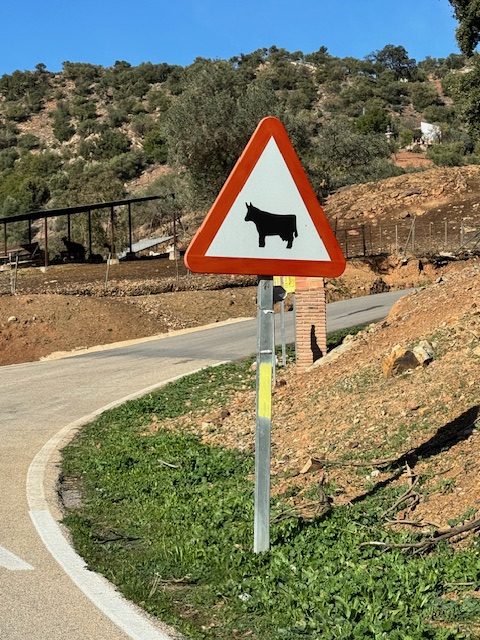
Geographically, Malaga reminded me of Arizona or southern California, with steep, dry hills and desert vegetation. Sadly, they are suffering through a brutal multi-year drought, but the plants were green and the almond trees were blossoming. 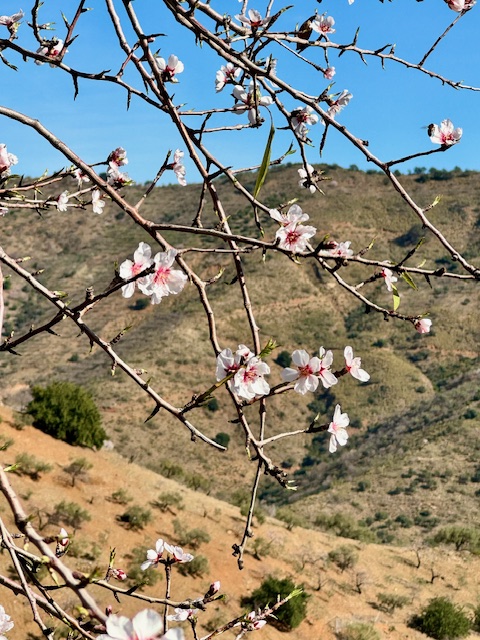 Temperatures were in the upper 60s(F), which felt quite balmy to us. Our route took us through rolling hills with pleasant, short climbs (including one very steep one) to the small hllside town of Almogia, where we had a coffee and snack before heading back to Malaga. The ride was a perfect first exploration of the area.
Temperatures were in the upper 60s(F), which felt quite balmy to us. Our route took us through rolling hills with pleasant, short climbs (including one very steep one) to the small hllside town of Almogia, where we had a coffee and snack before heading back to Malaga. The ride was a perfect first exploration of the area.
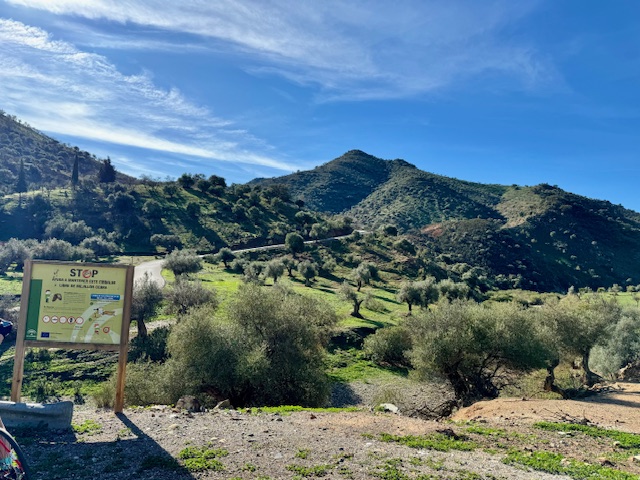
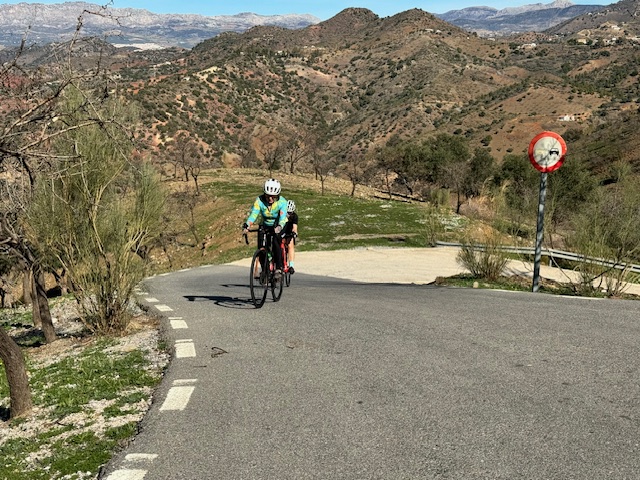
Our next day was a counter-clockwise loop that included the Puerto del Leon and a wonderful descent back to down. Again, at about 30 miles, this was a comfortable ride that didn’t eat the short winter day. It starts with a waterfront cruise to the east before turning north, where it climbs for about 11 miles, gaining about 3000′.
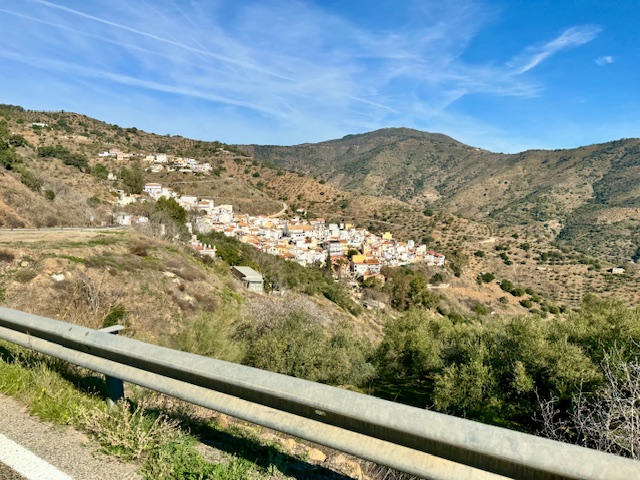
Some sections are burly, at 17%, but most is between 5-8%. The views of the ocean and adjacent hillsides are great. There is a restaurant at the top, as well as a cafe at the Fuente de la Reina, just a bit past the summit. The real reward is the descent back to Malaga, with 2 looping turns down the ridgeline.
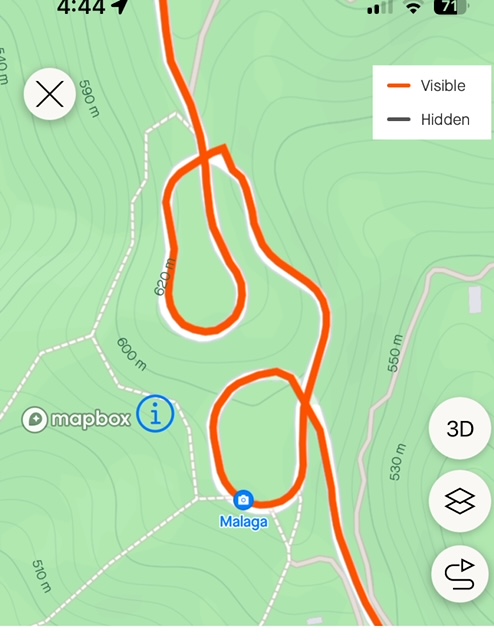
Each bend in the road is banked, a trick CDOT has not yet figured out, and you can carve around them like a skier. The road surfaces are excellent, with smooth pavement and no dirt or gravel on the roadway.

Post ride, we stopped in at Eat, Sleep, Cycle, where to my surprise, Chris was standing behind the counter. He was true to his word and had moved to Malaga to open the store and help make the cycling grow. We had a lovely chat and did some shopping. While I was aware that ESC did guided tours (multi-day), he mentioned that they would do pretty much anything, including one-day trips. These aren’t on their website, but if you contact the store you can put something together. ESC hosts a no-drop Saturday morning ride, and I quickly said I’d be there. He sent me a link to the route and added me to the list of participants.
Saturday morning dawned clear and pleasantly cool, so I skipped the arm warmers and vest. There were about 8 riders, and we carried a healthy, quick pace out of town to the small town of Alora.
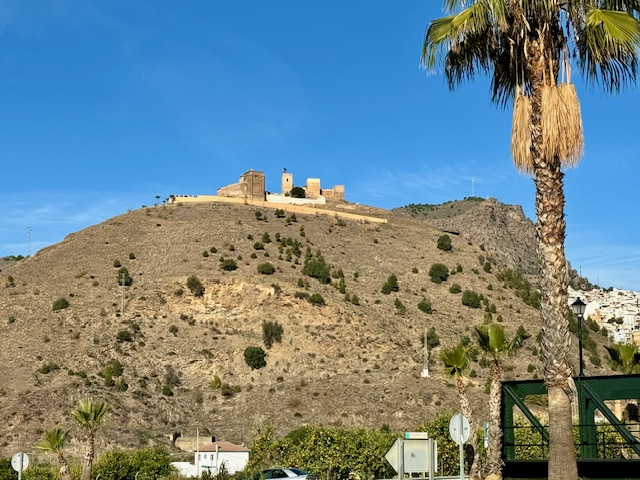
This ride headed west of Malaga in an out-and-back route with a loop to enter Alora from the north, making for an easier climb into the town. The pace was fast but not brutal, and it was a very pleasant 58-mile ride.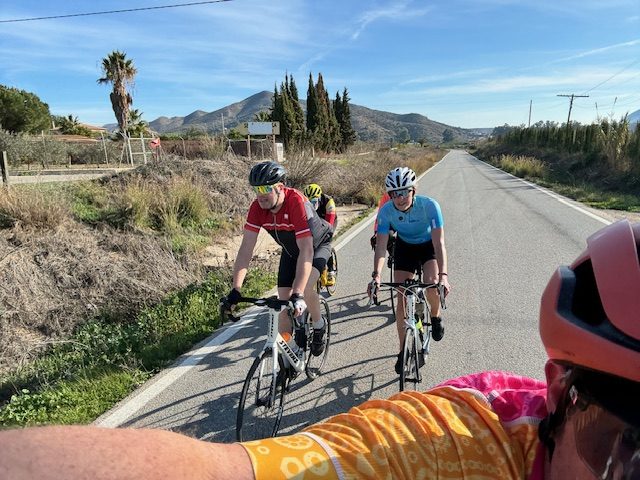
The big difference between ESC and Bike2Malaga is that ESC is a more of a full-fledged bike shop, with a service center. They sell bikes, kit, nutrition, accessories, and have a wide range of rentals, from mountain to road race bikes. Along with their tours, they have a full offering for everything you need. B2M, on the other hand, is more day-tour and rental oriented. Their website has more local ride info and .gpx files, but ESC can certainly help with routes if you visit the shop.
I asked several riders with local knowledge about gravel cycling in Malaga, and they all said that it was very steep (this I believe) and that while there is some riding, it’s still growing. Several suggested Granada for graveling. Chris also said that there is good mountain biking, but we didn’t have enough time to check it out. There was a general implication that gravel and mountain were still being developed in Malaga, and that the networks need time to grow and expand. This indicates I will need to return to Malaga to check out the mountain biking, and I will need to visit Granada to ride gravel.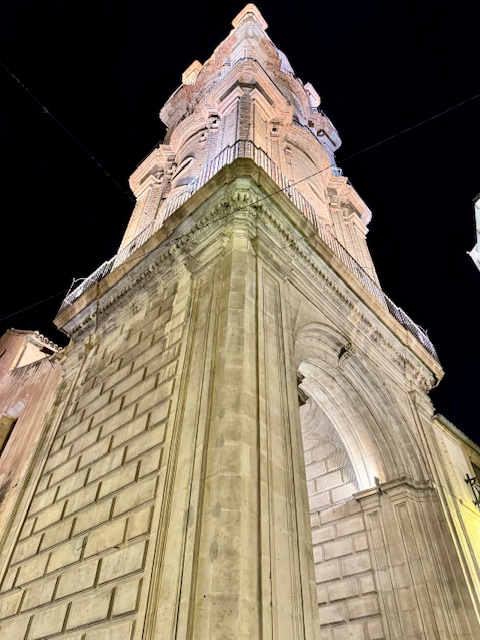
All in all, I think Malaga is an excellent destination for road cycling. It has generally good weather, and despite being in southern Spain, its location on the coast keeps the temperatures relatively mild year round. The rides I found are generally loops into the mountains, with many options to choose from. Bring your climbing legs, through, because things tend towards the steep. Unlike Colorado, where our roads were originally designed for horse-drawn ore wagons or light gauge rail, Malaga’s roads don’t worry about winter conditions and thus go upwards, quickly.
Trip planning is relatively easy since there are multiple ways to get there, so it comes down to choosing the time of your visit and how heavy the beach-going tourism is at your selected time. There are loads of hotels, plus a lot of apartment rentals to select from. I recommend putting it on your list. Based on a single, quick trip, I can see returning in mid-winter when I am thinking of dry pavement and short sleeves instead of concentrating on waxing my skis and shoveling my deck.
I think Chris is correct: there is a huge amount of road cycling opportunity here, and that it is largely untapped. There’s no shortage of tourism, but unlike Girona and Mallorca, you don’t run across thundering herds of MAMILs pedaling slowly up hill and clip-clopping into coffee shops. It’s more like small advance packs of them, riding on empty roads, soaking up the sunshine, and sipping their recovery drinks at outdoor cafes, smug in the fact that they don’t have to share these roads and tables (yet).
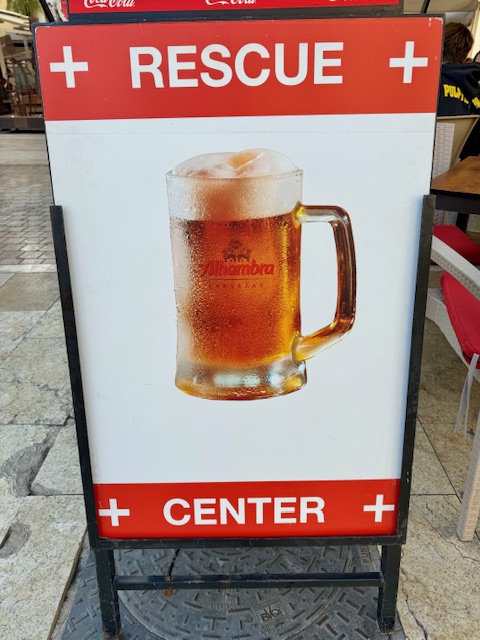
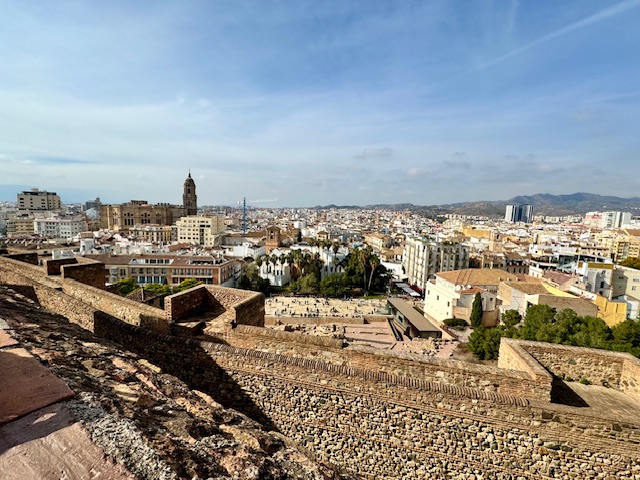
One Reply to “Malaga Road Cycling: the New Hot Spot?”
Comments are closed.